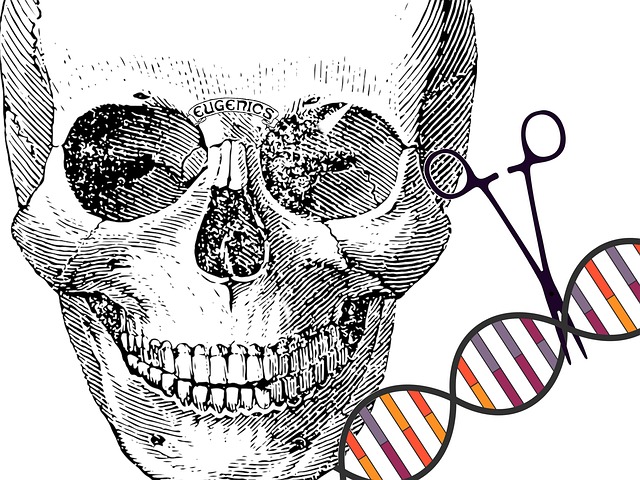Contrast media for ultrasound (CMU) innovations drive advancements in diagnostic imaging. Targeted delivery systems, bio-responsive polymers, and biodegradable CMU enhance image quality and accuracy. Real-time monitoring through specialized nanoparticles enables dynamic assessment, benefiting oncology, cardiology, and fetal medicine with improved patient care and outcomes.
The field of ultrasound diagnostics is undergoing a renaissance, driven by advancements in contrast media. This article explores future innovations in contrast media formulations aimed at enhancing image quality, with a focus on targeted delivery systems and biodegradable options. We delve into real-time monitoring technologies that integrate contrast media with ultrasound, promising more precise and safer diagnostic procedures. These developments not only improve diagnostic accuracy but also open doors to more efficient healthcare solutions.
Enhancing Image Quality: Innovations in Contrast Media Formulations
The future of ultrasound diagnostics looks bright with ongoing advancements in contrast media formulations. Researchers are constantly striving to develop contrast agents that can significantly enhance image quality, enabling more accurate and detailed assessments. One key focus is improving the resolution and contrast of ultrasound images by creating contrast media with targeted microbubble properties. These microbubbles, when injected into the patient, can interact with ultrasonic waves in ways that highlight specific anatomical structures, making it easier for sonographers to detect subtle abnormalities.
Innovations also include incorporating functionalized molecules or nanoparticles into contrast media, allowing them to bind to particular tissues or cells of interest. This targeted approach promises to revolutionize ultrasound imaging by providing a more precise view of the body’s internal workings. Such advancements in contrast media formulations hold immense potential for improving diagnostic accuracy and efficiency in various medical settings, making ultrasound a versatile and indispensable tool for healthcare professionals.
Targeted Delivery: Advanced Technologies for Localized Contrast Enhancement
In the realm of ultrasound diagnostics, targeted delivery systems are revolutionizing the administration of contrast media for ultrasound (CMU). These innovative technologies aim to enhance localized contrast, significantly improving image quality and diagnostic accuracy. By employing advanced materials and techniques, researchers are developing targeted nanoparticles that can be precisely guided towards specific tissues or organs. This approach ensures optimal concentration of CMU at the site of interest, thereby amplifying anatomical details and enabling more accurate assessments.
One promising technique involves utilizing bio-responsive polymers that can undergo structural changes in response to specific biological cues, such as pH or enzyme activity, prevalent in targeted tissue environments. These smart carriers can release CMU in a controlled manner, maximizing its effect while minimizing off-target interactions. Such targeted delivery systems have the potential to transform ultrasound imaging by providing clearer, more detailed pictures of internal structures, ultimately leading to better clinical outcomes.
Biodegradable Options: Safety and Sustainability in Focus
The field of ultrasound diagnostics is constantly evolving, and one area of significant interest is the development of biodegradable contrast media. Traditional contrast agents, while effective in enhancing imaging, have raised concerns regarding safety and environmental impact due to their non-biodegradable nature. This has prompted researchers to explore alternative options that offer both improved diagnostic capabilities and enhanced sustainability.
Biodegradable contrast media are designed to break down naturally within the body or environment, reducing potential side effects and ecological hazards. These materials often utilize natural components or synthetic substances that can be metabolized safely. By focusing on biodegradability, scientists aim to create contrast agents that not only improve diagnostic accuracy but also minimize the long-term effects associated with traditional ultrasound contrast media. Such advancements have the potential to revolutionize ultrasound imaging, making it a safer and more environmentally friendly procedure.
Real-time Monitoring: Integrating Contrast Media with Ultrasound Technology
The integration of real-time monitoring capabilities through advanced contrast media and ultrasound technology is poised to revolutionize diagnostic imaging. By incorporating specialized nanoparticles or microbubbles into contrast media, healthcare professionals can gain unprecedented insights during ultrasound examinations. These agents enhance the visibility of specific structures, enabling continuous tracking and detailed observation over time. This development facilitates dynamic assessment, allowing doctors to monitor changes in organs, blood flow, and pathologies in real-world scenarios.
This innovative approach paves the way for more accurate and timely diagnoses, especially in fields like oncology, cardiology, and fetal medicine. Real-time monitoring with enhanced contrast media promises improved detection of subtle abnormalities, better assessment of treatment responses, and reduced need for repeat procedures, ultimately enhancing patient care and outcomes.
The future of ultrasound diagnostics looks promising with continuous advancements in contrast media. Innovations in formulations aim to enhance image quality, while targeted delivery technologies offer precise contrast enhancement. Biodegradable options prioritize safety and sustainability, addressing environmental concerns. Integrating contrast media with ultrasound technology enables real-time monitoring, revolutionizing the field and improving diagnostic accuracy. These developments collectively contribute to more effective and eco-friendly contrast media for ultrasound applications.
